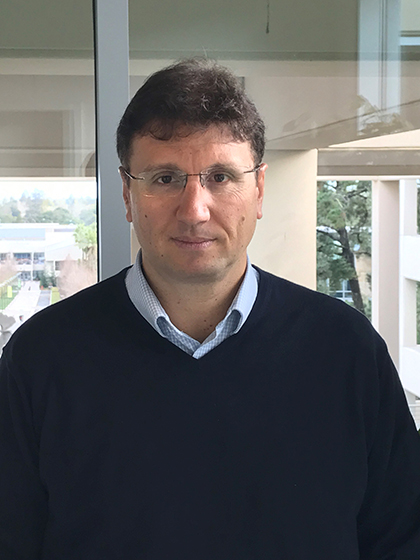TECH NEWS
NFV initiates total transformation for operators to become agile on-demand providers
Telecoms operators are transforming rapidly as they deploy network functions virtualization (NFV) with the goal of achieving a software defined architecture that empowers them with the capabilities and flexibility to compete in a highly connected future.
February 1, 2017


Gabriele Di Piazza, VP Products & Solutions, Telco NFV, VMware
Telecoms operators are transforming rapidly as they deploy network functions virtualization (NFV) with the goal of achieving a software defined architecture that empowers them with the capabilities and flexibility to compete in a highly connected future. Operators recognize that this transformation, which will see them become on-demand service providers rather than commodity bandwidth vendors, is not a simple technology refresh; instead it requires business-wide transformation. – By Gabriele Di Piazza, VP Products & Solutions, Telco NFV, VMware
For this reason, many operators have adopted a top down approach to address the end-to-end transformation comprehensively across their entire businesses. This holistic approach is driven from the CEO’s office to ensure employee skill sets, the culture of the business, its organizational structure and its technical architecture are all integral parts of the transformation.
In the Internet of Things (IoT), for example, operators won’t be able to achieve the economies of scale that are needed without the capabilities of a software defined environment. IoT devices often need to communicate only sporadically so providing continuous capacity is unnecessary. In a traditional architecture, capacity would be fixed and possibly over-provisioned to ensure quality of experience.
With IoT forecasted to generate billions of device connections, such fixed provisioning of capacity is cost-prohibitive. Operators are now deploying NFV to enable them to provision capacity and connectivity on demand and in real time. They recognize that a fully automated environment is a pre-requisite for delivering a software defined service platform supporting flexible allocation of capacity.
However, flexibility issues don’t only arise in IoT, the emergence of ultra high definition 4k video will see huge volumes of capacity consumed by users. Operators may choose to manage this with abilities to throttle excessive 4k streamers or to provide burst capability for downloaders paying a premium for 4k content.
A software defined operation is also fundamental to the successful deployment of 5G networks because the mixture of technologies involved in 5G will require flexibility and the ability to be extremely dynamic, spinning up virtual network functions (VNFs) as and where required before turning them off when demand stops. Again, automation is vital to handle the scale and frequency of changes.
Analytics is such a vital piece of the virtualization puzzle because without the insights it provides, automated systems are essentially flying blind, making best-guess efforts as to the likely requirements of services running over the network. The absence of physical devices with defined capacity means that the network is always dynamic and therefore capacity availability must be tracked and managed utilizing insights generated from analytics capabilities. In addition, as technologies such as machine learning are deployed more widely, the role of analytics in educating automated systems becomes increasingly important. For instance, insights gained from analytics tools can enable automated systems to make decisions based on the likelihood of user behavior affecting network demand.
This analytics-enabled, automated, software-defined environment presents a substantial organizational shift for operators. Their network engineers are world experts at managing specific network hardware but this becomes a relatively dumb commodity in the NFV world. All the intelligence lies in the software so network engineers are learning new software skills to augment their domain knowledge. Such domain knowledge is still necessary but it needs to be expressed in software-defined rather than hardware-defined terms.
For that reason, the structure of operators’ teams is changing. Operators are moving to a structure composed of an IT organization supported by a networking organization to run the core telecoms service. The high level services knowledge of the networking professionals is still be required but networking professionals are becoming familiar with using capacity that is delivered to them from the virtualized, commoditized platform. Networking specialists are therefore becoming service-aware and moving to an infrastructure as a service model (IaaS) with everything running on customized off-the-shelf (COTS) hardware, while, conversely, IT experts are becoming the platform owners – the cloud team.
Mapping the organization to this requires a cultural change and necessitates a DevOps environment in which an idea thought of on a Monday can be a service on the network by Thursday and off it again by the following Monday if it doesn’t work. Operators understand the transformation challenge and leading companies, notably AT&T, have mandated that all network engineers become fully trained on this software model.
The whole point of virtualization is to put a common infrastructure in place where capacity, be that compute, storage or networking, can be allocated to services where and when required. This encompasses services that already exist but require more or less capacity as well as enabling new services, all while delivering levels of operational agility not possible using the old approach of service and data silos.
These challenges go straight to the heart of the telecoms business. As operators harness virtualization technologies to drive down their cost of operations and drive up their quality of services, they will cease to be the providers of connectivity and become the providers of monetized, digital experiences. That’s a transformation that operators simply can’t wait to complete.